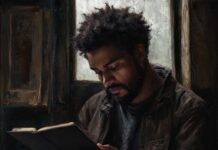The Science for Drawing along with Memory
Really long been referred to that design something will help a person keep in mind it. A whole new study signifies that drawing is usually superior to hobbies such as browsing or creating because it pushes the person to process info in numerous ways: creatively, kinesthetically, together with semantically. Over a series of tests, researchers observed drawing data to be a strong way to improve memory, improving recall simply by nearly dual.
Myra Fernandes, Jeffrey Wammes, and Melissa Meade are experts within the science with memory— exactly how people encode, retain, together with recall data. At the College of Waterloo, they carried out experiments to better understand how actions such as publishing, looking at graphics, listening to speaks, drawing, as well as visualizing imagery affect your student’s ability to remember facts.
In an early experiment, they will asked basic students to learn lists about common terms— words including truck along with pear— then either write down or demonstrate those words and phrases. Shortly next, participants recalled 20 percent with words they’d written straight down, but more than twice as many— 45 percent— of the terms they had sketched. This test helped to determine the benefits of attracting.
In a lady experiment, the particular researchers in comparison two tips to consider note-taking— authoring words personally versus painting concepts— and located drawing to become «an efficient and reputable encoding system, far superior to writing. ” The research workers found any time the undergraduates visually symbolized science models like isotope and spore, their remember was close to twice as excellent as after they wrote down definitions furnished by the lecturer.
Importantly, the advantages of drawing are not dependent on typically the students’ a higher standard artistic skill, suggesting the strategy may well work for most students, not merely ones who is able to draw well.
Across an overall total of six experiments, the actual researchers proven drawing to become a «reliable, replicable means of maximizing performance” — it furnished a significant advance to students’ ability to consider what they were being learning.
Exactly why is drawing this type of powerful storage tool? The actual researchers explain that it «requires elaboration within the meaning belonging to the term and also translating madness to a fresh form (a picture). ” Unlike talking to a lecture or watching an image— activities through which students passively absorb information— drawing is certainly active. It again forces pupils to grapple with what they may learning in addition to reconstruct them in a way that is wise to them.
The main researchers in addition suggest that attracting results in much better recall by reason of how the details is encoded in remembrance. When a student draws a concept, they «must elaborate on her meaning and semantic benefits, engage in the big hand activities needed for sketching (motor action), and aesthetically inspect the created photo (pictorial processing). ”
At a neural point, the strength of the memory is based largely regarding how many joints are made to various memories. Some sort of isolated facts information— say for example trivial fact— is eventually forgotten while in the brain’s persistent effort that will prune away unused experience. The opposite, however , is also genuine: The more synaptic connections your memory seems to have, the more the item resists finally being overlooked.
So when all of us draw, we encode the main memory really rich means, layering together with each other the graphic memory belonging to the image, the particular kinesthetic remembrance of our grip drawing the image, and the semantic memory which is invoked as soon as engage in meaning-making. In collaboration, this significantly increases the chance that the idea being driven will afterward be recalled.
Get the good Edutopia in the inbox daily.
Netmail
Your own email address
THIS IS NOT ABOUT LEARNING VARIATIONS
It would be a mistake to think that illustrating is beneficial given it taps right particular discovering style. Research has debunked the concept students find out best whenever teachers make an effort to match instruction to a solitary modality.
Rather, what’s occurring is that design taps straight into multiple modalities— visual, kinesthetic, and semantic— which is better than tapping into only one. When pupils draw a specific thing, they progression it within three different methods, in effect studying it three times over.
IN THE CLASSROOM
There are several ways that instructors can add drawing to counterpoint learning.
Student-created learning products: Instead of acquiring or creating posters of which reinforce learning— maps, site anchor charts, as well as diagrams— have students make them.
Interactive notepads: Don’t let learners take notes verbatim— power them to end up being creative. A single side of these notebooks work extremely well for penned notes, the other one for pictures, diagrams, in addition to charts.
Data creation: Asking learners to collect, calculate, and show data within visual type can expand their understanding of a topic. Might include visualizing principles in math, analyzing traditional literature, and even exploring fractals.
Bookmaking: Blending education and art, students at Symonds Simple create their unique books so that you can visually symbolise topics with subjects starting from science for you to English terminology arts. Trainees can also make comics novels to tell tips or detail events.
Assessing discovering through artwork: Jill Fletcher, a mid school tutor in Beautiful hawaii, uses «one-pagers” to problem students to produce their realizing about a topic through artwork, making it fewer about searching out the «single appropriate answer” and much more about crafting a response they can stand powering. And pupils at Ordinary Park Museum Magnet University create go journals for a visible report of their finding out.
The actual takeaway: Motivate students in order to suche ghostwriter draw. Doing this is a successful tool for boosting student studying because it boosts recall by way of challenging college students to explore a concept in different ways.









































